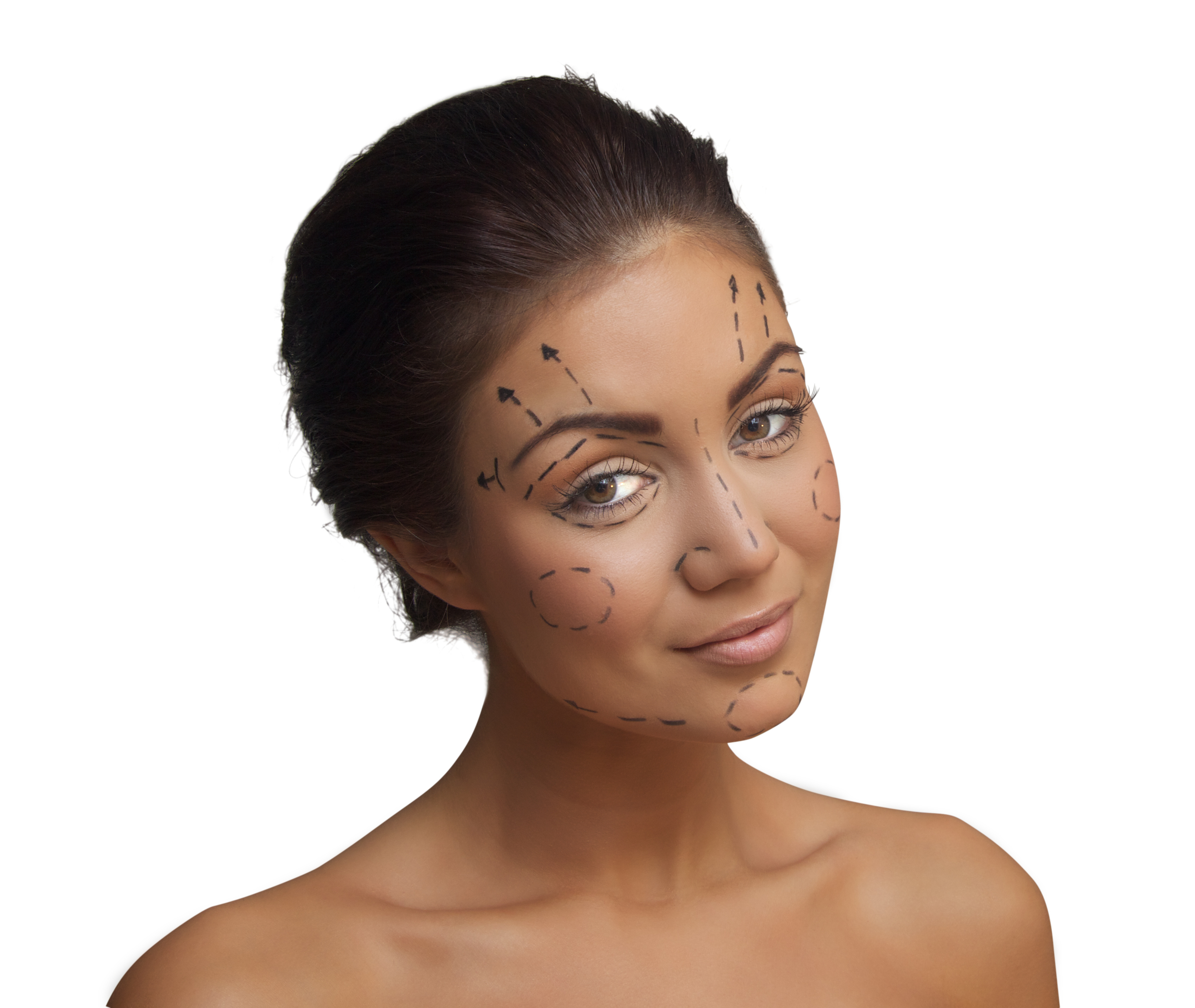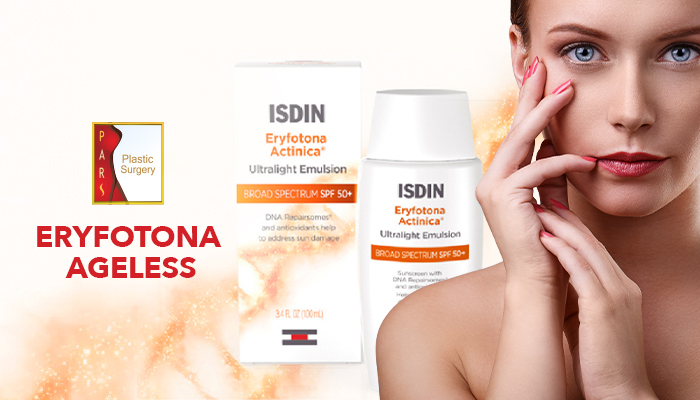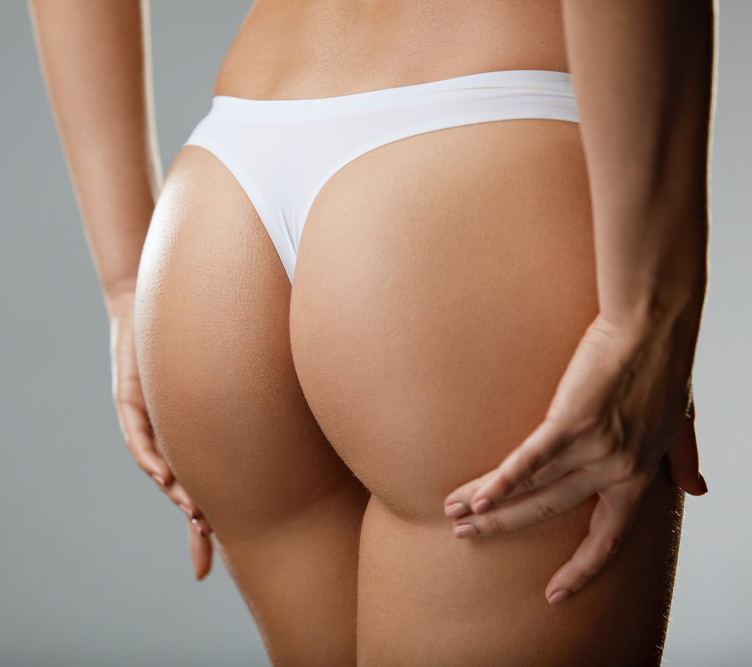
Facial implants are devices created and used to change the facial contours, augmenting the flat areas and reconstructing some face contours; in other words, they are used to enhance certain features and restore contouring and/or proportion of the face. The surgery may be elective, or it may be needed as a result of prior surgery on the face or hereditary traits.
These implants are specially formed with materials which are not rejected by human tissues; they are created in different sizes and shapes and are selected according the physical structure of the face and the specific zone to enhance or augment.
Basically, any part of the face may be changed with implants. The cheek (or malar area), chin, and jaw are the sites where facial implants are mostly used.
– Chin implants: This type of implant can improve the projection of the chin. This is desired by patients who have a disproportion between the upper and the lower half of the face (forehead and chin). Some people have a chin so small that it tends to “disappear” in its connection with the neck. With this implant, they recover the chin as a more projected part of the face.
– Cheek implants: These implants are used to improve the shape of the cheekbones and add projection to flat areas.
According to new statistics from the American Society of Plastic Surgeons (ASPS), chin augmentation is the fastest growing plastic surgery trend; the procedure recently skyrocketed in both women and men, as well as in all patients over the age of 20, with the largest increase seen in patients age 40 or older. Chin augmentation grew more than breast augmentation, Botox®, and liposuction combined in 2011.
Who is an ideal candidate for facial implants?
A good candidate for a facial implant is someone in good health who has reasonable and specific goals in mind for improvement of the facial contours, Likewise, his/her bone maturity and growth should be completed (especially in the skull). Most people reach bone maturity at the end of adolescence.
Likewise, other good candidates are patients who are bothered by a small and retracted chin, who want to improve the contour and roundness of the cheeks (which may become flat with aging process), and people who desire to enhance facial asymmetries or deformities caused by traumas or from birth (congenital).
It is important for the patient to be aware of other alternatives to change the face contours; even facial implants can be combined with other procedures as fat grafting, bone repositioning and grafting, and others.
What are the advantages of facial implants?
– They can correct facial asymmetries.
– They are placed through a localized surgery, which means that it is not necessary to perform a procedure in another area of the body.
– These implants are relatively easy and quick to place, and they offer permanent results.
What are the disadvantages of facial implants?
– If the patient has complications like graft rejection or infection, he/she may need another surgery to remove the implant.
– If the implant is not properly fixed and it moves from the correct position, the face contour will look altered.
– During the procedure, the plastic surgeon may cause injuries to the nerves or muscles.
How much does a facial implant surgery cost?
The cost of facial implants varies a lot, based on the surgeon experience, the type of procedure used, and the kind of implant. According to the American Society of Plastic Surgeons, the average is $2,400, though this doesn’t include the anesthesia fees, hospital or surgical facility costs, medical tests, and other expenses.
Because facial implants are elective surgery, insurance does not cover these costs, but in the case of reconstructive surgeries, it could cover them.
What is the preoperative preparation for a facial implant procedure?
During the consultation with the plastic surgeon, the patient will discuss his/her medical history, any dental problems he/she has had, and any prior cosmetic or reconstructive surgery he/she has had done on his/her face. The surgeon can write a letter detailing the case and provide photos that will be taken before the surgery.
The surgeon should also know what the patient wants to change about his/her appearance, why he/she has those goals, and whether the patient is planning on getting other surgeries or cosmetic procedures done. He/she will evaluate the patient’s health condition and any potential risk factors. During the consultation, photographs to decide the best technique with the patient are also taken.
Before the procedure, the surgeon will instruct the patient about precautions to avoid all conditions that predispose bleeding and delay the healing process, such as smoking and taking certain medications and supplements. This is recommended between 6 and 2 weeks before and after the procedure.
What is the general procedure of a facial implant surgery?
Most facial implant procedures take between 30 minutes and 2 hours to be performed (in some cases it may take more time). Facial implant surgery is usually performed as an outpatient procedure (meaning no overnight stay) in the hospital, surgeon’s office, or surgical center.
General anesthesia is commonly used during a facial implant procedure, although local anesthesia or intravenous sedation may be better in some instances. The surgeon will follow the surgical plan discussed before surgery.
In general terms, the procedures that the plastic surgeon uses to place each type of facial implants are similar. The first step consists in drawing marks to indicate the specific place where the implant should be located during the procedure. During the surgery, the patient will be maintained in the supine position (face-up). Later, the plastic surgeon will create an incision to insert the implant; a pocket is made under the skin to maintain the implant in its place.
– Cheek implants: The plastic surgeon selects the specific area where the implant will be placed, but this is always over the cheekbone. Usually, the implant should be located in the lower eyelid border to improve this area too. To insert the cheek implants, the plastic surgeon creates incisions inside the mouth and in the border between the gums and the upper lip, but when these implants are combined with other plastic surgeries, other incisions may be used, like on the lower eyelid or even the hairline.
– Chin implant: For a chin implant, the incision can be performed inside the mouth, in the joint between the gum and the upper lip, or under the chin. Chin implants may help give better balance to the profile.
Currently, facial implants can be made of different materials, but the most used are those made with solid silicone rubber; in addition, other options widely used are high-density porous polyethylene (Medpor) and ePTFE, or expanded polytetrafluoroethylene (Gore-Tex).
In the market, there are 3 general shapes of cheek implants: malar, submalar, or a combination.
– Malar implants: This is the most commonly used type; the plastic surgeon can place it directly in the cheekbones to achieve a better projection of these bones. The result is a “higher” projection of the face.
– Submalar implants: These implants are not placed over the cheekbones; these implants provide fuller cheeks, improving a sunken appearance in this area.
– Malar/submalar combination: This is a more extended type of implant, as it allows the surgeon to improve all of the lower and mid-face with only one implant.
The 3 general shapes of chin implants are:
– Central chin implants: This is the most common implant to change the shape of the chin, it mainly changes the projection of the chin (in different degrees) and in some cases, it may include changes in the jawline.
– Anatomical chin implants: This type of implant improves the chin and jawline at the same time. It is shaped by two wings united in an angle of 45 degrees. It molds very well to the mandibular bone, so once it is fixed, it is very stable and provides excellent contours.
– Extended anatomical chin implants: This is a variety of the anatomical implant; they differ because this implant has larger wings, improving the jawline even more. Likewise, its anatomical shape and wrap-around design allows it to counter jowls, too.
In other cases, this implant is used to expand the jaw; it can be more angular and square, which is why it is recommended for men.
Standard 4mm commercial shells are suitable to produce natural augmentations in most patients; but, for a more subtle effect, some patients choose a 3mm shell; in the other hand, for patients who desire a more dramatic effect, a 5 or 6mm shell is used. For more demanding patients, custom-designed implants can also be created (but these are more time-consuming and more expensive). This type of implant is also used in reconstructive surgeries. Actually, it may be created or adapted according to the patient’s CT scans. This is important because customized implants correct in better measure the specific defects or asymmetries.
The incision is finally closed with sutures and may be bandaged or taped. Once the surgery is finished, the patient is maintained in a recovery room, to be monitored until the effects of the anesthesia have passed.
Likewise, the plastic surgeon can cover the treated area with surgical dressings. Usually, the patient can go home right away, unless the plastic surgeon suggests otherwise.
On the day of the surgery, the patient should wear a loose blouse or shirt that does not have to be pulled over the face.
What is the postoperative care in a facial implant surgery?
Typically, recovery from a facial implant is quick. The patient should only need one week off from work and other normal activities at the most, though it is important to remember that the total recovery period will depend on the personal habits and whether or not the patient is having another surgery done at the same time. The surgeon will indicate when the patient can return to his/her regular level of daily activity and work.
During recovery, the patient should remain with the head elevated at 45 degrees for a week, and should set up an area specially conditioned with a lot of ice or freezer bags, ointments or creams (recommended by the surgeon) for any external incision sites, clean gauzes, soft foods, and mouthwash (if the surgeon recommends not brushing the teeth while the face recovers). The cold compresses and liquid/soft diet are generally indicated for 2 to 10 days.
After the surgery, the patient will have bruising and swelling that can last at least two days. Bandages or dressings may be used to keep the surgical site clean and to support the position of the implant during initial healing once the procedure is finished.
If the patient follows all of the plastic surgeon’s recommendations, the patient will have an excellent recovery. Recommendations may include the use of surgical dressings, antibiotics or painkillers safe to take, and activities that are allowed; the surgical incisions should not subjected to excessive force, swelling, abrasion, or motion during the time of healing.
Stitches will be removed between 5 and 10 days later. Some kinds of sutures (like those used inside the mouth) do not need to be removed, as they dissolve by themselves during the same period of time. Strenuous physical activity is prohibited for at least 4 to 6 weeks.
What are the risks and potential complications of a facial implant surgery?
Serious complications are infrequent in this procedure. However, as all surgeries do, this surgery has risks and potential complications. One of the most common complications is that contour abnormalities can occur if implants shift or become malpositioned. Extrusion of implants is rare, but it can be caused by excessive trauma or infection.
Some patients may present an adverse reaction to anesthesia. Blood and other fluids can accumulate under the skin, infection of the treated areas can occur, or the patient can have altered sensation, dissatisfaction with the results, or persistent pain.
What are the results of facial implant surgery?
The results of a facial implant surgery can be noticed almost immediately, but during the first days, swelling and discoloration can alter the appearance. In some cases, the swelling dissipates completely after months. Movements of the face should be restricted at the beginning, especially when the implant was inserted.
Facial implants are essentially permanent, but all implants can fracture as a result of normal activity or facial trauma, and on occasion, they can become infected. Most patients can expect a lifetime of improvement after facial implant surgery; but, in some situations, it may not be possible to achieve optimal results with a single surgical procedure, and another surgery may be necessary.
For safety, as well as the most beautiful and healthy outcome, it’s important to return to the plastic surgeon’s office for a follow-up evaluation at prescribed times and whenever the patient notices any changes in his/her facial implants. The patient should not hesitate to contact his/her surgeon when he/she has any questions or concerns.
Dr. Amjadi MD, DDS, FACS
Certified by the American Board of Plastic Surgeons
915 Gessner Rd #870
Houston, TX 77024
713-465-6198













